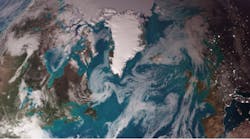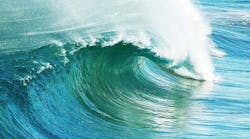As most HPAC Engineering readers know, Monday, April 22, is Earth Day. But how many of us, especially the younger members of our profession, know the history – and significance – of Earth Day?
Although the first Earth Day wasn’t celebrated until April 22, 1970, its genesis really goes back to 1962. That was the year that Rachel Carson’s Silent Spring was published. Carson, ostensibly a marine biologist, had studied at the Woods Hole Marine Biological Laboratory and Johns Hopkins University, where she earned an MA in zoology. She began her government career as a radio script writer for the U.S. Bureau of Fisheries and eventually became Editor-in-Chief for all of the U.S. Fish and Wildlife Service publications.
In her free time, she wrote articles on nature and eventually resigned from the Fish and Wildlife Service to write full-time. Prior to Silent Spring, she had published several books on the ocean, but it was her concerns about the harm to the environment and to human health caused by synthetic pesticides that she addressed in Silent Spring. The book became a New York Times bestseller, with more than a half-a-million copies sold worldwide.
Although her research and the book were violently opposed by the chemical companies, its publication eventually led to a nationwide ban on DDT. DDT had been developed during World War II to control insect-borne diseases in service members and was then used by farmers and for pest control in buildings. Before its ban in the U.S. and most other countries, it was arguably the best known pesticide in the world.
The raising of public awareness for environmental issues following the publication of Silent Spring, and a huge oil spill off the Southern California coast in 1969 – the largest at the time, but now third behind the Exxon Valdez and Deepwater Horizon disasters – provided the impetus for then Sen. Gaylord Nelson (D-WI) to model an environmental movement after the surging student anti-war movement that was then protesting the escalating Vietnam War, which was almost universally opposed on college campuses across the U.S. Billing it as a day set aside for a “national teach-in on the environment,” Sen. Nelson recruited Rep. Pete McCloskey (R-CA) to be his co-chair, making it a bipartisan effort. Recognizing that a national event like that could only be successful with support from activist college students, the April 22nd date was selected because it fell between Spring Break and final exams.
On that first Earth Day, some 20 million Americans participated, with organized protests on most college campuses, and both Democrats and Republicans coming together to address a myriad of environmental issues. As a direct result of Earth Day, by the end of that year, the U.S. Environmental Protection Agency (EPA) had been created and the first Clean Air, Clean Water, and Endangered Species Acts all had been passed.
Last year, Earth Day was more global than ever. It included an “End Plastic Pollution” theme and it is estimated that more than a billion people participated in events in Argentina, Australia, Bangladesh, Bosnia and Herzegovina, Brazil, Bulgaria, Cameroon, Canada, Costa Rica, Ecuador, Egypt, France, the Gambia, Ghana, Guatemala, Hong Kong, India, Indonesia, Iraq, Ireland, Italy, Jamaica, Kenya, Malaysia, Nepal, Nigeria, Pakistan, Papua New Guinea, Philippines, Romania, Singapore, South Africa, Sri Lanka, Thailand, Togo, Trinidad and Tobago, Turkey, Uganda, United Kingdom, United States, Uruguay, Uzbekistan, Vietnam, and Zambia.
So, Earth Day may not be new, but nearly 50 years later, it is still the real “Green Deal”.









